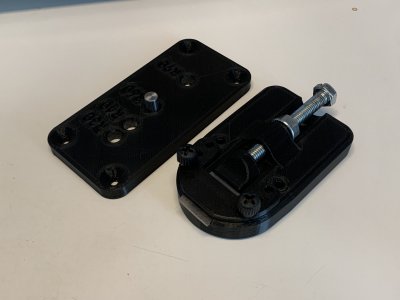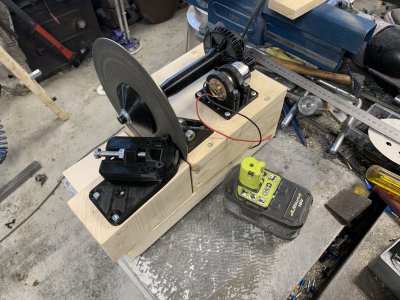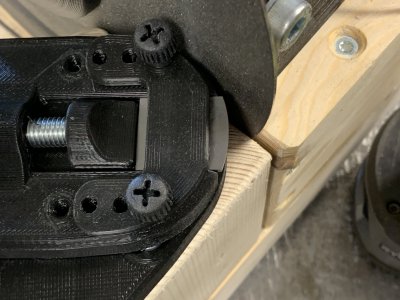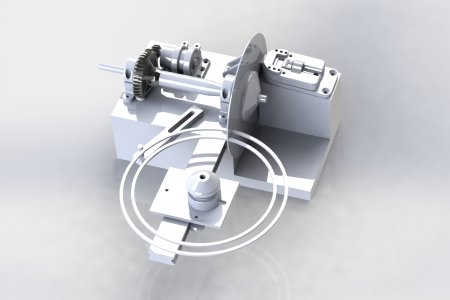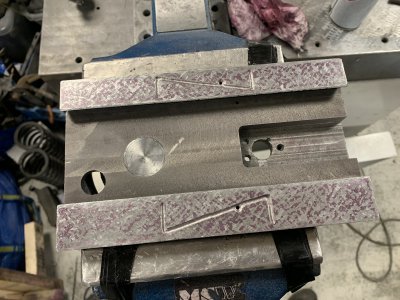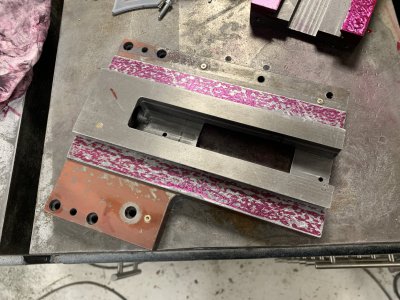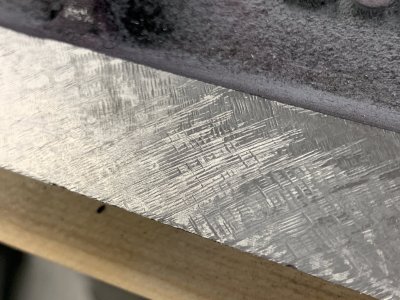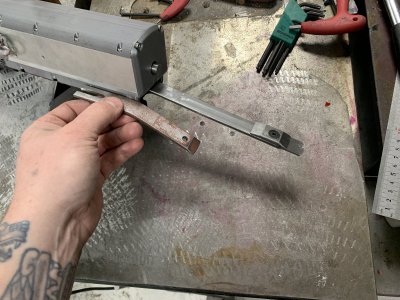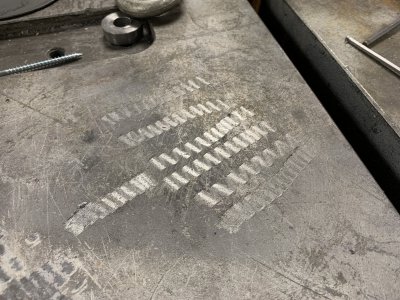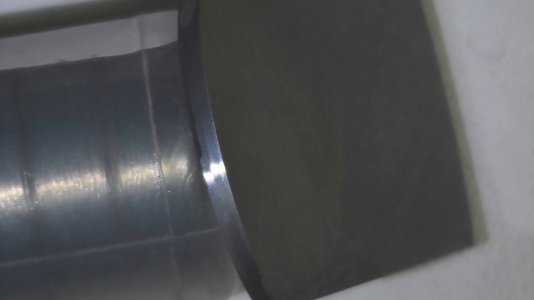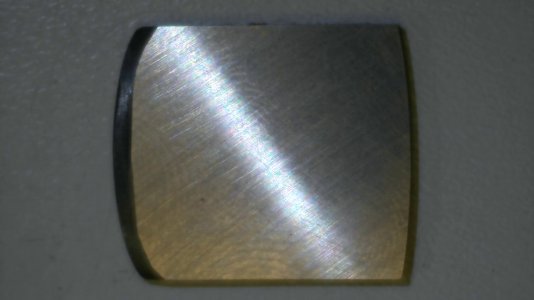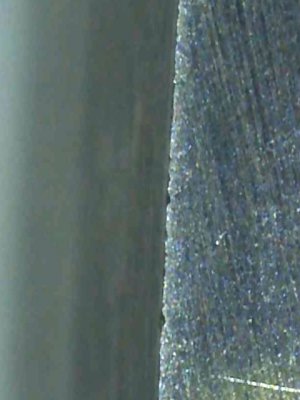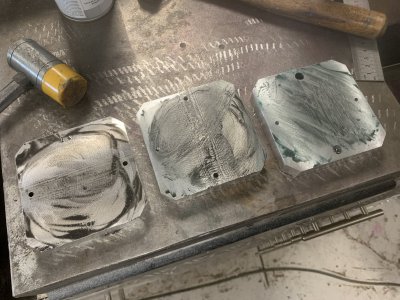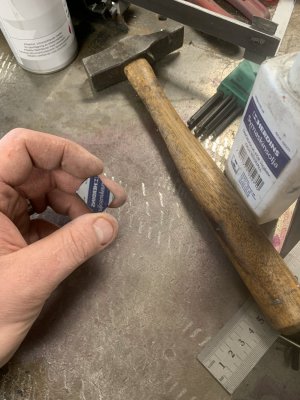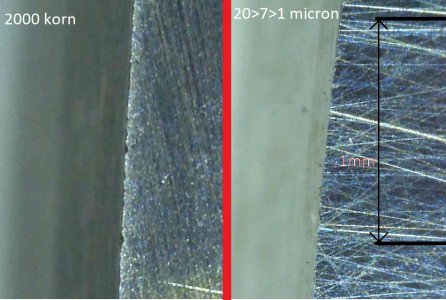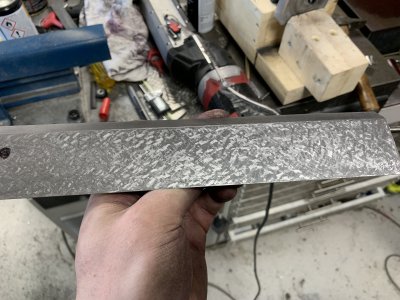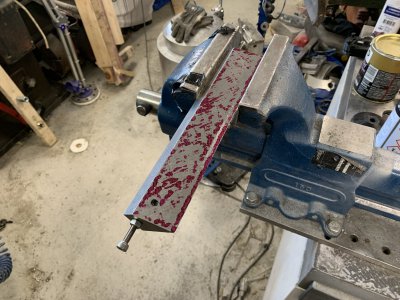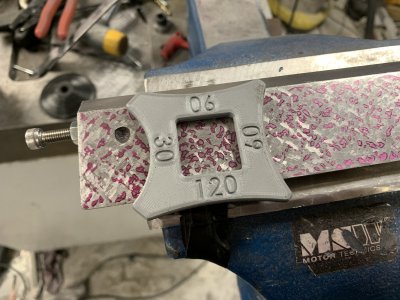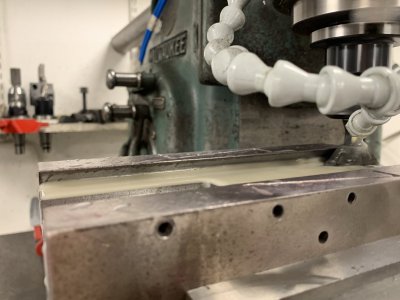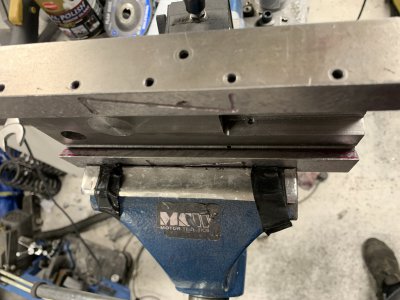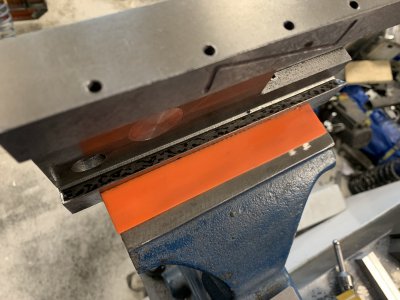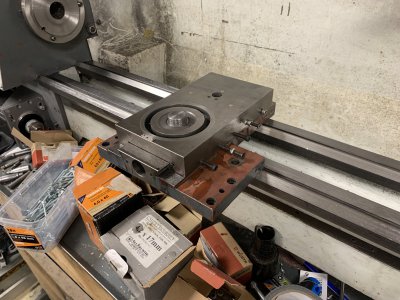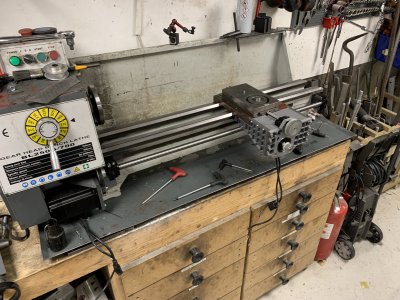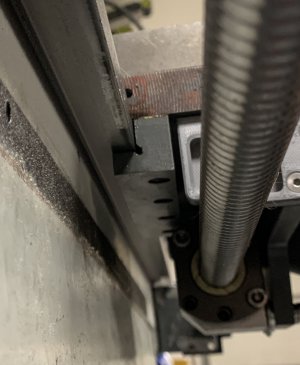- Joined
- Nov 7, 2019
- Messages
- 454
Finally doing some real work and not just side-project'ing.
Cut off the rear handle, chopped the trigger into bits and mounted it underneath, adjusted by hand with a screw, new on/off switch mounted on the side where it felt natural.
A bit shoddy but just wanted to get it functional so I could move on.
Just some notes for the future:
1. Oscillating mass needs to be a lot less, especially at larger strokes it shakes a lot, which gets annoying when you work for several hours.
2. Total mass should preferably be less too, whilst it probably helps dampen the hits, it also gets quite heavy to hold after a few hours.
3. The undergrip is not very useful, I mostly, intuitively, want to put my hand ontop of it or on the front.
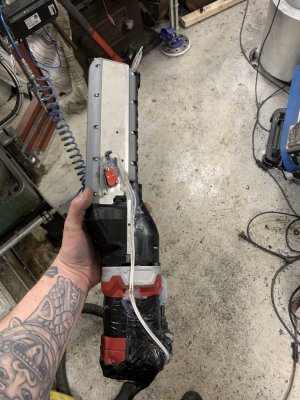
Despite the flaws it's still an insanely useful tool and makes it a joy to scrape.
Went at it on the saddle and since it's mostly flat from inking it on the granite plate, I next decided to try to match it to the lathe bedways after giving them a proper stoning.
Took a little bit for me to get comfortable but even the tiny V-ways were easy to work on, especially with the stroke down to just a few millimeters.
Still some ways to go but good enough for it to sit solidly.
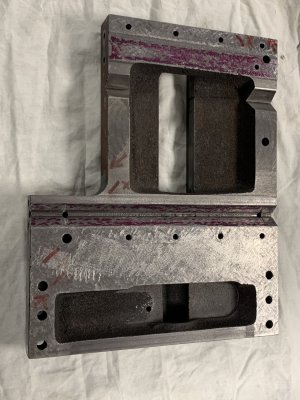
Decided to move on up and match the crossslide to the saddle, even after a few passes this is the tiny inking I got on this side.
Took me >10 passes just get it in plane, there's faster ways but I need the practice.
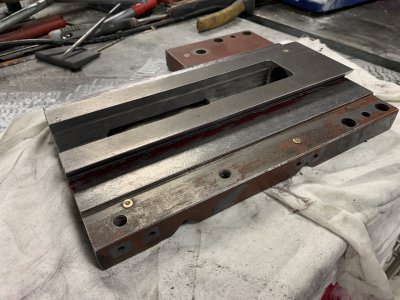
Few hours of work and the coverage is looking pretty good.
There's some artifact that's scraping/smudging the ink on the top right(crossslide/master) which I need to figure out.
I also think I'm going to doublecheck the crossslide on the graniteplate since I've gotten a lot better at both scraping and inking things up.
I think the better my master is, the easier the sadle will be to get just right.
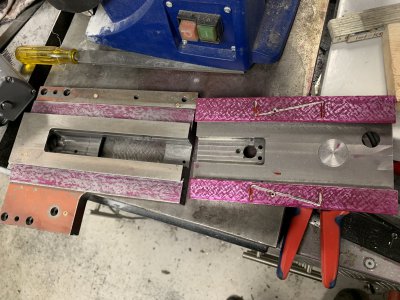
Cut off the rear handle, chopped the trigger into bits and mounted it underneath, adjusted by hand with a screw, new on/off switch mounted on the side where it felt natural.
A bit shoddy but just wanted to get it functional so I could move on.
Just some notes for the future:
1. Oscillating mass needs to be a lot less, especially at larger strokes it shakes a lot, which gets annoying when you work for several hours.
2. Total mass should preferably be less too, whilst it probably helps dampen the hits, it also gets quite heavy to hold after a few hours.
3. The undergrip is not very useful, I mostly, intuitively, want to put my hand ontop of it or on the front.

Despite the flaws it's still an insanely useful tool and makes it a joy to scrape.
Went at it on the saddle and since it's mostly flat from inking it on the granite plate, I next decided to try to match it to the lathe bedways after giving them a proper stoning.
Took a little bit for me to get comfortable but even the tiny V-ways were easy to work on, especially with the stroke down to just a few millimeters.
Still some ways to go but good enough for it to sit solidly.

Decided to move on up and match the crossslide to the saddle, even after a few passes this is the tiny inking I got on this side.

Took me >10 passes just get it in plane, there's faster ways but I need the practice.

Few hours of work and the coverage is looking pretty good.
There's some artifact that's scraping/smudging the ink on the top right(crossslide/master) which I need to figure out.
I also think I'm going to doublecheck the crossslide on the graniteplate since I've gotten a lot better at both scraping and inking things up.
I think the better my master is, the easier the sadle will be to get just right.


